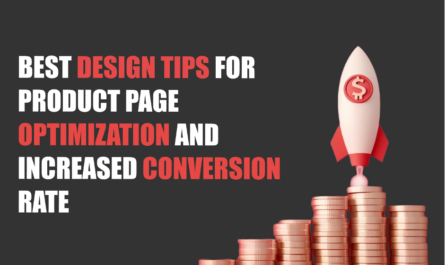In an ever-evolving digital landscape, the importance of e-commerce website development cannot be overstated. Yet, this crucial aspect of online businesses can prove quite costly. Understanding these costs and developing a cost-effective strategy is imperative for any business hoping to thrive in the e-commerce realm.
Contents
- 1 Understanding the Costs of E-commerce Website Development
- 2 The Importance of a Cost-effective Strategy
- 3 Key Elements of a Cost-effective Strategy
- 4 Key Strategies for Cost-Effective E-commerce Website Development
- 5 The Potential Pitfalls and How to Avoid Them
- 6 E-commerce Website Development Cost
- 7 Conclusion
Understanding the Costs of E-commerce Website Development
E-commerce website development can be a significant investment. Costs may include web hosting, acquiring a domain name, website design and development, security measures, and maintenance fees. Being cognizant of these expenses is the first step towards a cost-effective strategy.

The Importance of a Cost-effective Strategy
A cost-effective e-commerce website development strategy can profoundly impact your business. It can not only save money but also ensure that you get the best return on your investment. Numerous studies and statistics underscore the importance of cost-effectiveness in business endeavors.
Key Elements of a Cost-effective Strategy
To ensure the cost-effectiveness of your e-commerce website development, several crucial elements must be taken into consideration:
- Prioritizing Needs Over Wants: It’s essential to distinguish between the must-haves and the nice-to-haves. This aids in allocating resources effectively.
- Leveraging Open Source Solutions: Utilizing open-source e-commerce platforms can significantly reduce costs associated with licensing fees.
- Regular Maintenance and Updates: Regular upkeep of your site can prevent costly overhauls in the future. This includes regular updates, security patches, and response to customer feedback.
- Scalable Solutions: Opt for solutions that can scale with your business growth. This prevents the need for a complete system overhaul as your business expands.
- Partnering with the Right Service Provider: Choosing a development partner with a proven track record in delivering cost-effective solutions can ensure you get the best value for your money.
Key Strategies for Cost-Effective E-commerce Website Development
There are several strategies you can adopt to make your eCommerce website development more cost-effective. These include planning ahead, setting a solid budget, picking the correct platform for your needs, prioritizing feature implementation based on your business needs, leveraging pre-made templates and themes, and considering outsourcing certain tasks or hiring freelancers.
- Adopting a Phased Development Approach: Breaking down the overall development into smaller, manageable phases can help control costs. Each phase can focus on essential features, gradually building up the website without overwhelming your budget.
- Thorough Market Research: Prior to development, conduct extensive market research to understand your target audience, their needs, and preferences. This allows you to invest in features that directly cater to your audience, thereby avoiding unnecessary expenses.
- Utilizing SEO Best Practices: Implementing SEO strategies during the development stage can help improve your website’s visibility in search engine results, driving more organic traffic, and potentially increasing sales.
- Focusing on User Experience (UX): A well-designed UX can reduce the chances of visitors leaving your website without making a purchase. The more intuitive and user-friendly the design, the higher the likelihood of conversion, making your website more cost-effective in the long run.
- Implementing Effective Analytics: By tracking user behavior and website performance, analytics can provide valuable insights. This data can guide further development decisions, ensuring that you invest in changes that will have a positive impact on your bottom line.
The Potential Pitfalls and How to Avoid Them
While cost-saving is important, businesses must be wary of common pitfalls. Cutting corners may result in poor user experience, security compromises, or lack of scalability. Awareness and strategic planning can help avoid these common errors.
- Overlooking Mobile Optimization: In today’s digital age, a significant portion of web traffic comes from mobile users. Neglecting to optimize your website for mobile could result in missed opportunities and lower search engine rankings. Ensure your website is responsive and mobile-friendly.
- Ignoring Security Measures: Online security is paramount. Failing to implement adequate security measures can lead to data breaches, which can harm your reputation and customer trust. Invest in secure hosting and SSL certificates.
- Neglecting Testing and Quality Assurance: Skipping testing phases to save time or cost might lead to bugs or errors that could disrupt the user experience. Implement systematic testing and quality assurance checks to ensure smooth operation.
- Lack of Scalability: Your website should be able to accommodate growth in user traffic and data over time. If not properly planned, your site may struggle under increased demand, leading to poor performance or downtime. Factor in scalability during the planning and development stages.
E-commerce Website Development Cost
The Ecommerce Website Development Cost is a key consideration when planning your online storefront. This cost, which can range from $5,000 to over $500,000, encompasses various factors – from design and functionality to integration, security, and ongoing maintenance. If you invest in a custom-designed ecommerce site with advanced features and integrations, you should expect to be on the higher end of this cost spectrum. However, choosing a simpler, template-based ecommerce website with basic features can reduce the cost significantly. Regardless of your initial outlay, remember that a robust, scalable, and secure ecommerce website can yield substantial returns on your investment in the long term. Therefore, your Ecommerce Website Development Cost should also factor in the potential revenue and growth opportunities your ecommerce site can facilitate.
Conclusion
In conclusion, the development of an ecommerce website is an intricate process that requires careful planning, strategic investment, and an understanding of your business needs. The cost can be diverse, ranging significantly based on the design, functionality, integration, security, and maintenance choices you make. Whether you opt for a custom-designed ecommerce site with advanced features or a template-based website with basic functionalities, it’s essential to prioritize security, scalability, and user experience. These factors not only influence the immediate Ecommerce Website Development Cost but also the potential return on investment in the form of revenue growth and business expansion. Remember, a well-planned and executed ecommerce website is an asset that can significantly boost your business’s online presence and profitability.




